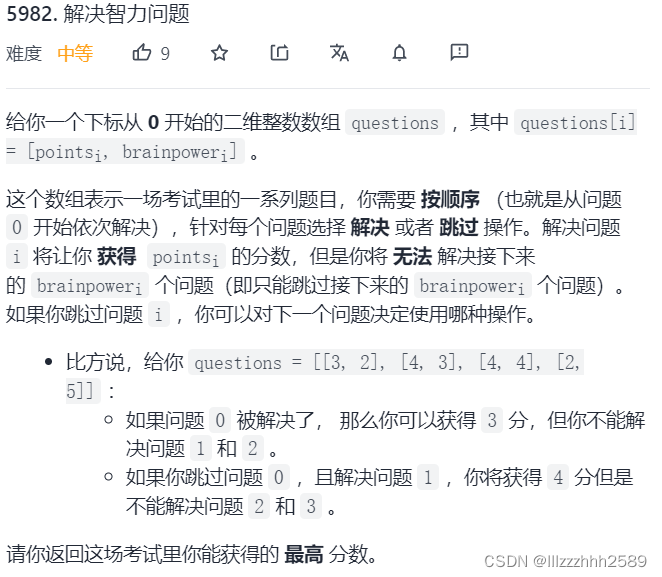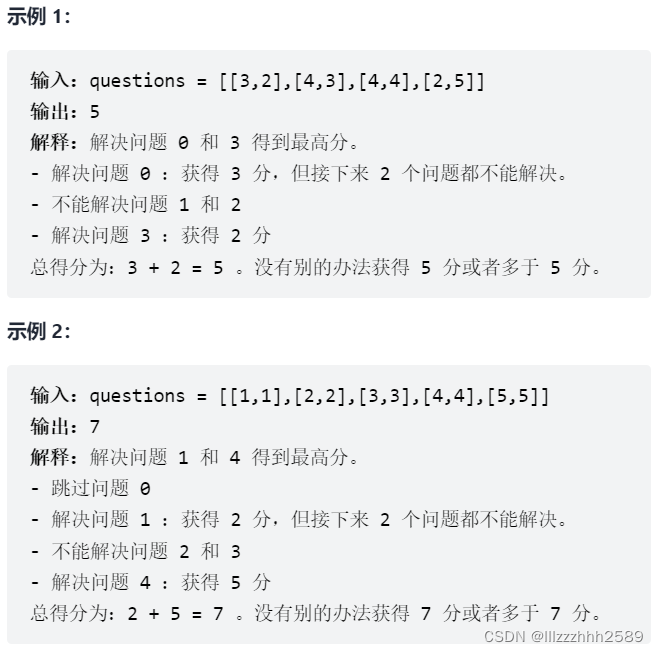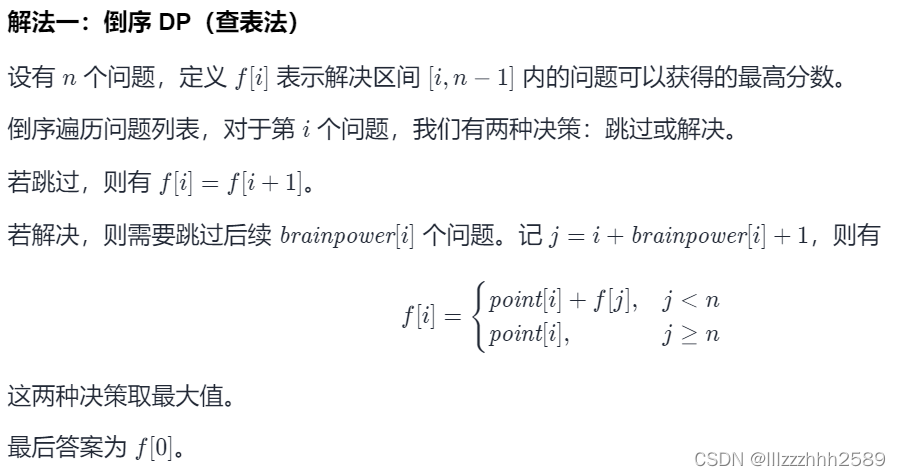


思路,倒序
类似背包选取的问题,但要求有选取间隔
由于数据量比较大,回溯的选取很容易超时。
第一种方法,倒序的更新dp,正向想的难点在于,对于新的位置,不知道前面限制要跳过多少,如果记录需要多一重循环超时。
倒序的想,就可以在每次选择的时候知道跳过多少位置,因为对当前要处理的元素i来说,可以知道如果取了该位置要跳过brainpower[i]个问题,可由后面位置更新当前位置,转移方程转自大佬灵茶山艾府

代码
class Solution {
public:
long long mostPoints(vector<vector<int>>& q) {
int n = q.size();
long long ans = 0;
vector<long long> dp(1e6, 0);
for(int i = n-1; i >= 0; i--) {
dp[i] = max(dp[i+1], q[i][0] + dp[i+q[i][1]+1]);
}
return dp[0];
}
};
思路,正序
对于每个位置,更新选择和不选的next位的dp;
如果不选择当前位i,next位为i+1,更新dp[next];
如果选择当前位i,next位为跳过限制后的i + questions[i][1] + 1,更新next;
遍历,对每个位置更新他的两种方式的next位,最后dp数组中最大值就是答案。
状态转移方程转自大佬灵茶山艾府

代码
class Solution {
public:
long long mostPoints(vector<vector<int>>& questions) {
int n = questions.size();
vector<long long> dp(1e6, 0);
for(int i = 0; i < n; i++) {
int next = i + 1; //不选
dp[next] = max(dp[next], dp[i]);
next = i + questions[i][1] + 1;
dp[next] = max(dp[next], (long long)questions[i][0] + dp[i]);
}
return *max_element(dp.begin(), dp.end());
}
};
另外,对于 i=n-1和 next≥n 的情况,可以将其更新到 dp[n] 中,避免最后一次的遍历找最大值
class Solution {
public:
long long mostPoints(vector<vector<int>>& questions) {
int n = questions.size();
vector<long long> dp(n + 1, 0);
for(int i = 0; i < n; i++) {
int next = i + 1; //不选
dp[next] = max(dp[next], dp[i]);
next = min(i + questions[i][1] + 1, n); //选择当前位,跳过
dp[next] = max(dp[next], (long long)questions[i][0] + dp[i]);
}
return dp[n];
}
};